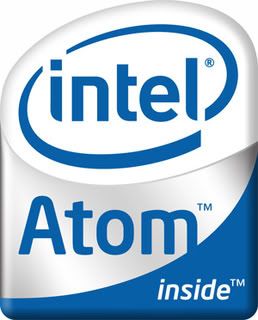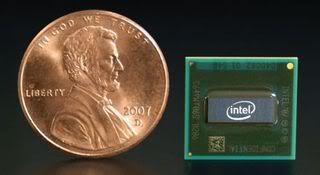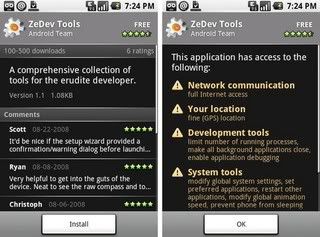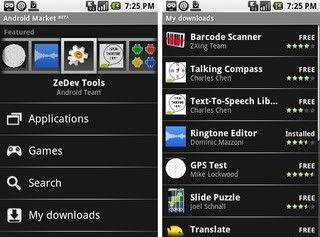


Intel has official begun shipping its new Atom Processor 330, a 45 nm dual-core processor for nettops.
Credit: www.blogeee.com On Friday, Intel officially began shipping its 45 nm Intel Atom Processor 330, Intel’s first Atom processor to feature dual-cores. With a 1.6 GHz clock-speed, 1 MB of L2 cache and support for DDR2 ddr2 667, the Atom 330 looks like Intel just combined two Atom 230 processors processors . The added core does double the processor’s TDP unfortunately, an increase from 4 W to 8 W.
The Atom 330 will be available as an integrated part of the new Intel D945GCLF2 desktop motherboard motherboard , which features the Intel 945GC Express Chipset, Intel GMA 950 integrated graphics http://en.wikipedia.org/wiki/Graphics_processing_unit and a 533 MHz system bus. The Intel D945GCLF2 motherboard also offers a S-Video connector, gigabit Ethernet http://en.wikipedia.org/wiki/Ethernet , 6-channel high definition audio and a single DIMM dimm socket supporting up to 2 GB of DDR2 667/533 memory.
Intel Atom processors have been specifically designed by Intel to be extremely power-efficient, however many sacrifices were made to achieve this balance between performance and power. It turns out that multi-threading greatly helps Atom processors overcome the effects of some of the sacrifices that were made. As a result, Atom processors that use Hyper-Threading technology see large performance gains and the use of two actual cores along with Hyper-Threading, as used in the Atom 330, should result in even greater gains.
Intel has designed the Atom 330 for use in nettops, which are entry-level, Internet-centric desktop PCs. It is likely that a dual-core Atom processor will eventually make its way into the mobile market, but Microsoft may not allow Windows XP to be sold on such a system. Intel Atom processors are facing strong competition, such as from Via’s Nano nano processors and offerings by AMD.
"What's Your Comment?!?"

